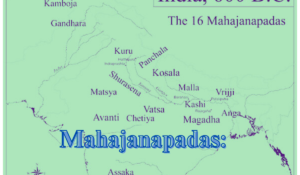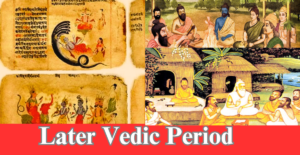Mesopotamian Civilization:
Introduction:
The cradle of civilization, bathed in the Tigris and euphrates, the Mesopotamian flowers, where innovation dared to meet fertile soils, from the dawn of agriculture to the cuneiform whispers of history inscribed on clay, it created empires such as Sumer and Babylon, each of which were jigurats. It left behind a glittering tradition of winged deities and the world’s first legal rules. Get ready to explore the turbulent story.
Mesopotamian Civilization Geomorphology:
Mesopotamia is located in West Asia, which includes parts of Iraq and Kuwait.At the beginning of the third millennium BC (PSP), it grew with the emergence of various states around the cities in the region.The Sumerian, Akkadian, Babylonian, and Assyrian civilizations flourished in Mesopotamia.The word “Mesopotamia” is derived from the Greek language, where “Meso” means ‘in the middle’ and “Podomas” means river. IIt is situated between the rivers Euphrates and Tigris which join together in the Persian Gulf.The northern part of Mesopotamia was called Assyria and the southern part was called Babylonia.
Sumerians:
Established in the Lower Tigris Valley in 5000-4000 BCE.Contemporaries of the Indus Valley and Egyptian civilizations.Engaged in commercial activities with neighboring civilizations.It is believed to have originated from Asia.Nippur made many cities a significant hub.He developed a triangular writing system called cuneiform.In the early days, kings served as chief priests.The political domination of kings came to an end in 2450
Akkadians:
Between 2450 and 2250 BC, the Akkadians briefly dominated Sumeria.Sargon, a famous Akkadian king and his successors ruled for more than 100 years from 2334 to 2218 BC.The Cuneiform documents of the Akkadians refer to the Indus Valley Civilization. The documents of Sargon (b.c. 2334-2279) refers to the docking of ships from Meluha, Magon, and Tilmun at the ports of Akkadian. Meluha is identified as the Indus Valley.Akkad, later known as Babylon, became the commercial and cultural center of West Asia.
The Babylonians:
The Amorites, the Jewish people, migrated from the Arabian deserts to Babylon in Mesopotamia.The Amorites established Babylon as their capital and came to be known as the Babylonians.The sixth king of Babylon, Hammurabi (b.c. 1792 – 1750), extending Babylonian domination to the western part of Mesopotamia.Prior to Babylon, ur ( from 2112 to 2004 BC ) and then Babylon ( from 1792 to 1712 BC ) played significant roles in Mesopotamian history.The world’s first epic, featuring the Sumerian king Gilgamesh, is considered to be the main cultural and literary achievement of Mesopotamia.Hammurabi is known as the symbol of his laws, which is known as hammurabi’s code, which is a significant legal and social development in the ancient world.
Assyrian Empire:
By 1000 BC, the Assyrian Empire had significant political influence in Mesopotamia.Lamas, the chief deity of Assyria, was worshipped by Assyrian kings, including the Assyrian kings.The Assyrian government was centrally controlled by the emperor, and provincial governors administered the regions.Azure was the capital of the Assyrian Empire.Azurbanipal (668-627 BC) was a remarkable king of Assyria, known for building a library of famous documents.Azurbanipal used cuneiform writing for his records and inscriptions.Azurbanipal’s library was particularly popular and contained a collection of important documents.The Assyrians worshipped the guardian deity Lamas.
Society, Government and Administration:
- The Sumerian civilization consisted of city-states surrounded by agricultural lands.The walled cities had jigurats, central temples controlled by priests.Members of government: rulers, clergymen, clerk.The king served as ruler and high priest.
- Social hierarchy: rulers and clergy, followed by clerks, merchants and craftsmen.
- Clerks managed tax collection accounts; The priests collected taxes in the temple godowns.The administration of the state is carried out by the councils.Cultivable land owned by the king and the upper classes.
- Initially, the peasants were temple slaves and were later released.Not all people are allowed to live within the city limits.
Food and Agriculture:
The Mesopotamians primarily had agriculture as their main occupation.Developed advanced irrigation systems to support agriculture.He cultivated various crops including wheat, barley, onion, cotton, grapes, apples and dates.He reared cattle such as cows and sheep to meet various needs.It relies on fish as the primary food source, indicating the importance of aquatic resources.
Mesopotamian Civilization Trade and Exchange:
The Mesopotamian civilization engaged in significant trade as an important economic activity.Traders helped exchange goods between Mesopotamia and areas such as Syria, Asia Minor, Iran and the Indus Valley.The ships were used for business, highlighting the importance of waterways in facilitating trade.Mesopotamian temples not only functioned as religious centers but also as banks and played a role in financial transactions.Civilization had a well-documented credit system, which would represent early written evidence of interest on loans.
Cities and Urban Structure:
- Houses in Mesopotamian cities were built with walls made of mud or baked bricks.Doors were a common feature in these houses.Some lived within the city limits, in homes with more durable structures.The others lived in reed huts outside the town.
- The jigurats, the large temple structures, were central to the cities.These temples were built on platforms and resembled steep pyramids.
- There were staircases leading up to the jigurats, allowing access to religious rituals and rituals.Around the central temple, there were various structures, including ceremonial corridors, sanctuaries, tombs, banquet halls, workshops and administrative buildings.
- The ceremonial banquet halls and sanctuaries were integral components of the urban structure.These places may have been used for religious ceremonies and communal gatherings.There were workshops, warehouses, and warehouses that emphasized the economic and administrative aspects of civilization.The Mesopotamian civilization, especially the Sumerians, had a polytheistic religious system, worshipping various deities of male and female deities.
Mesopotamian Civilization main deitie are:
| Enil | The god of wind and sky is worshipped in the city of Nippur. |
| Ninnil | The god of grain. |
| Marduk | Worshipped by the Babylonians |
| Ashur | The chief god of the Assyrians. |
| Ishtar | God of love and fertility. |
| Tiyamat | The God of the Sea and Chaos |
| sin | God of the Moon |
Kings were regarded as earthly representatives of the gods, emphasizing the close connection between political and religious powers.The Mesopotamians created a rich legend, including the epic of the famous Gilgamesh. The myths and myths of Mesopotamian religion, particularly those recorded in cuneiform writing, continue to influence the modern understanding of ancient civilizations and are significant in the study of comparative mythology.
The legal code of Hammurabi;
A significant legal document from the Mesopotamian civilization.Sections 282 cover a variety of topics, including family rights, trade, slavery, taxes and wages.It depicts Hammurabi receiving the legal code from the sun god Samas.The principle of vengeance: The basic concept based on the concept of “an eye for the eye” and “one tooth for tooth”.
Cuneiform writing system:
It was formed in 3000,It was named “cuneiform” by wedge-shaped letters.One of the oldest writing systems in the world.Baked clay tablets are commonly used to engrave cuneiform.These tablets serve as a rich source of information about sumerian civilization.
Mesopotamian Civilization Art:
Mesopotamian art used a variety of mediums, including stone and clay sculptures and paintings on different surfaces.There is a wide range of artistic expression in the main carved subjects that include animals such as goats, cubs, bulls and lions. Mesopotamian artists carved mythical creatures such as lions and bulls with human heads, reflecting the importance of mythology in their culture.The culmination of Mesopotamian art occurred during the Assyrian and Babylonian empires, producing some of the largest and most impressive statues at that time.Some of the paintings and paintings from Mesopotamian art have survived over time, providing valuable insights into their artistic and cultural achievements.
Mesopotamian Civilization Science:
The Mesopotamians excelled in mathematics and introduced the concepts of multiplication, division, and trigonometry.They developed a numerical system based on 60, which affects the measurement of our time (60 minutes per hour, 360 degrees in a circle).Advanced methods of weights and measurements were developed.Introduced the 12-month lunar calendar, which had an impact on Greek astronomy.There were seven days a week in the Sumerian calendar.He invented a water clock to keep track of time.Developed methods for measuring surface and solids.In the 11th century BC, he produced a manual for diagnosis and developed the medical system.Lists of symptoms and remedies that reveal knowledge of herbs and minerals are included.
Conclusion:
The Mesopotamian civilization, although long disappearing from earthly domination, remains an important foundation of human history. From creating agriculture and complex governance to creating the world’s first writing system and shaping our understanding of astronomy and mathematics, these brilliant riverside pioneers have set the stage for countless civilizations whose cities are in ruins. Even though their empires have turned into soil, their legacy still whispers into our laws, our calendars, and even the stories we tell, inscribing their indestructible identity on the eternal canvas of human progress.




Pingback: Jainism |Mahavira(Varthamana)|History| Founder | Features
Wow, amazing weblog format! How long have you ever been ruunning
a blog for? you mke blogging look easy. The full lookk of your weeb site iis great, leet alone the content material! https://Www.waste-Ndc.pro/community/profile/tressa79906983/
Wow, amazing weblog format! How long have you ever been running a bloig for?
you make blogging look easy. The full look of your web site is great, let alone the content material! https://Www.waste-Ndc.pro/community/profile/tressa79906983/
Hello! Do you use Twitter? I’d like to follow you if that would be okay.
I’m absolutely enjoying your blog and look forward to new posts. https://14ito.mssg.me/